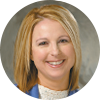The Written Word
For the family practice, you should have publications that address the interests and concerns of various audiences: pregnant women; mid-life adults; seniors; and children in all age groups (newborn/infant, early childhood and adolescents). For all audiences, the subject matter should include nutrition, exercise and relevant issues for their category. For example, many parents struggle with the issue of immunization, antibiotics and general chemical treatment for their children. Women may have special concerns and questions about menopause, depression or finding balances in life. Seniors need to be cautioned with the deleterious effects of drug combinations.
Start with your pamphlet display. Does it contain items that are current, attractive, four-color and easy to read? A pamphlet should raise interest and stimulate the reader to pursue the doctor with questions or refer for a consultation. Overwhelming the reader with excessive details will turn away the average consumer.
A bookcase stocked with a variety of current topical titles is very useful for the education-oriented practice. If your book collection is small or outdated, start off 1999 with a monthly $50 book allowance to slowly build your collection over the year. Considering registering at a bookstore to help those looking for gift ideas for your next birthday.
Topical information may be expanded further. Collect local and national newspaper articles. USA Today has weekly articles that should be shared with patients. Articles from chiropractic newspapers and magazines are another source of information. One chiropractic magazine always features a celebrity or sports figure that reports a positive chiropractic story. You might want to place these articles in slipcovers and create a celebrity and sports binder. Then display the binder in the adjustment or reception room.
Don't forget to ask your staff to participate. Encourage them to bring articles to the office and reward their efforts with periodic movie or dinner passes.
For Your Viewing Pleasure
The TV/VCR is a must for all reception rooms. Whether you like it or not, people are conditioned to view television for information. Use the few minutes they spend waiting to provide education on numerous chiropractic and non-chiropractic topics. One video that all practices should have is "From Simple Beginnings," which was produced by the Chiropractic Centennial Committee. This video presents the first hundred years of our profession. Increase your video library by collecting topics that cover philosophy, research, personal injuries, wellness and chiropractic care for children.
You might want to occasionally use videos that bring a lighthearted feeling into the practice. Disney and others will provide endless selections. An entertaining movie can be used during the hours the office sees more children or on Saturday. For those days when the practice is running behind schedule, your patients will be more forgiving if they had fun watching an enjoyable film.
In the Adjusting Room
The standard educational tool for the adjusting room is usually pamphlets. Expand that to educational binders, white boards and amounted clear plastic holder. The white board may be used to share a positive/encouraging message or announce a new event or service. The clear 7" by 11" plastic holder should have articles or messages that bring attention to current information.
The key to effectively using pamphlets, white boards or plastic holders is change. Change pamphlets twice a month; white boards two to four times a month; and plastic holders weekly. When patients enter for their visits, they will begin to expect (and look for) the latest changes in the adjustment room.
Change is the operative word. A practice that takes the time to create educational changes typically reflects a doctor who takes an active interest in staying current. So, if a visitation team should show up today, what would they find?
Click here for previous articles by Claudia Anrig, DC.





